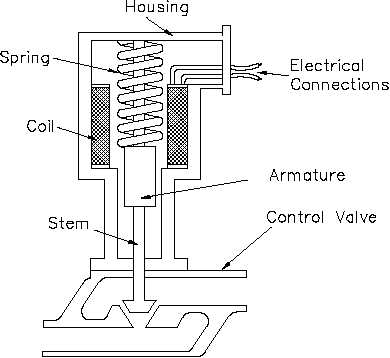VALVE ACTUATORS
Process Controls
The principles of operation of a hydraulic actuator are like those of the pneumatic actuator. Each
uses some motive force to overcome spring force to move the valve. Also, hydraulic actuators
can be designed to fail-open or fail-closed to provide a fail-safe feature.
Electric Solenoid Actuators
A typical electric solenoid actuator is shown in Figure 38. It consists of a coil, armature, spring,
and stem.
Figure 38 Electric Solenoid Actuator
The coil is connected to an external current supply. The spring rests on the armature to force
it downward. The armature moves vertically inside the coil and transmits its motion through the
stem to the valve.
When current flows through the coil, a magnetic field forms around the coil. The magnetic field
attracts the armature toward the center of the coil. As the armature moves upward, the spring
collapses and the valve opens. When the circuit is opened and current stops flowing to the coil,
the magnetic field collapses. This allows the spring to expand and shut the valve.
IC-07
Page 58
Rev. 0



